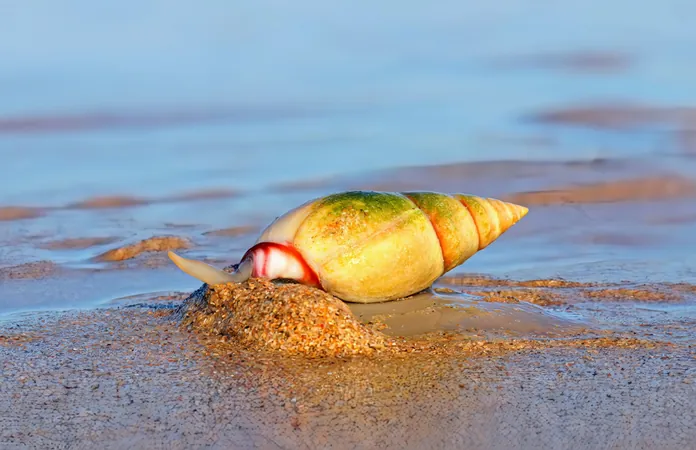
Snails Stage a Remarkable Comeback: A Living Testament to Evolution in Action
2024-10-12
Author: Li
A Long-Term Ecological Experiment
The Koster islands, with their diverse ecosystems, were once teeming with the marine snail species Littorina saxatilis. While larger islands saw a recovery in their snail populations within a few years, the smaller skerries were left barren after the disaster. Enter marine ecologist Kerstin Johannesson from the University of Gothenburg. In 1992, she initiated a groundbreaking experiment by reintroducing the resilient L. saxatilis snails to the impoverished environments of these skerries, effectively allowing researchers to observe evolutionary processes in real-time over three decades.
The Evolutionary Dance of Snails
L. saxatilis snails, abundant along North Atlantic coasts, have evolved distinct adaptations based on their habitats, primarily splitting into two ecotypes—Crab and Wave. Crab snails, larger and equipped with sturdy shells, exhibit cautious behavior due to their predator-laden environment. Meanwhile, the smaller, more vibrant Wave snails boast thin, colorful shells and a bolder demeanor.
Following the crisis, Wave snails faced extinction while Crab snails thrived. Johannesson's decision to transplant Crab snails to the wave snail’s former thriving grounds set the stage for a remarkable evolutionary comeback.
Witnessing Evolution Unfold
The speed of adaptation was astonishing. Within the first decade, scientists noted significant evidence of evolutionary changes as Crab snails began adjusting to their new surroundings. Diego Garcia Castillo, a leading author of the study from the Institute of Science and Technology Austria (ISTA), echoed this excitement: “Over the experiment’s 30 years, we could predict robustly the future traits of snails based on their genetic code. The transformation was both rapid and dramatic.
Importantly, this swift evolution wasn’t a process of starting from scratch. Many beneficial traits already existed at low frequencies in the original Crab population, underscoring the importance of genetic diversity in facilitating rapid adaptation.
Genetic Insights and Future Implications
Through meticulous examination of the snails’ phenotypes and genetic variability, researchers identified key chromosomal changes that underlie these evolutionary adaptations. The study revealed that traits already present in low frequencies became advantageous, with gene flow from neighbouring populations likely serving to further enrich the genetic reservoir.
As we ponder environmental shifts like climate change and pollution, this research stands as a beacon of hope. Not all species enjoy genetic diversity, and the ability to adapt quickly is often hindered by environmental pressures. The findings accentuate the critical need to protect natural habitats that foster genetic variation.
A Message of Hope for the Future
Today, the very snails Johannesson reintroduced in 1992 now number around 1,000—emblematic of resilience and evolutionary wonder. This saga of recovery is not merely a triumph for snails but a profound reminder of nature’s capacity to adapt and evolve. Anja Marie Westram, a former postdoc at ISTA, sums it up perfectly: “Perhaps this research helps convince people to protect natural habitats so that species do not lose their genetic variation. We all stand to learn so much from these humble creatures.
This insightful study, now published in Science Advances, offers vital lessons not only in the mechanisms of evolution but also in the importance of preserving biodiversity for the future of our planet. Don't miss out on the unfolding story of evolution in the face of adversity—let's ensure that this narrative continues for generations to come!




 Brasil (PT)
Brasil (PT)
 Canada (EN)
Canada (EN)
 Chile (ES)
Chile (ES)
 España (ES)
España (ES)
 France (FR)
France (FR)
 Hong Kong (EN)
Hong Kong (EN)
 Italia (IT)
Italia (IT)
 日本 (JA)
日本 (JA)
 Magyarország (HU)
Magyarország (HU)
 Norge (NO)
Norge (NO)
 Polska (PL)
Polska (PL)
 Schweiz (DE)
Schweiz (DE)
 Singapore (EN)
Singapore (EN)
 Sverige (SV)
Sverige (SV)
 Suomi (FI)
Suomi (FI)
 Türkiye (TR)
Türkiye (TR)